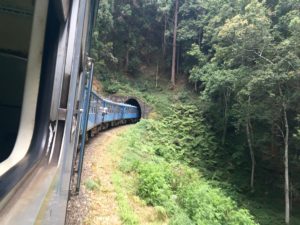 I have been traveling beyond Amtrak routes and outside of the USA this summer. Most recently I traveled to Sri Lanka, an island country south of India. It operates the highest broad guage railway (5 ½ feet wide) in the world. While I spent most of the time traveling in a vehicle, I had the privilege of riding on the Main Line from Nanu-Oya to Haputale in the hill country. The train traverses through tea plantations, forested mountains and valleys and lots of tunnels. The view was spectacular.
I have been traveling beyond Amtrak routes and outside of the USA this summer. Most recently I traveled to Sri Lanka, an island country south of India. It operates the highest broad guage railway (5 ½ feet wide) in the world. While I spent most of the time traveling in a vehicle, I had the privilege of riding on the Main Line from Nanu-Oya to Haputale in the hill country. The train traverses through tea plantations, forested mountains and valleys and lots of tunnels. The view was spectacular.
I was traveling with the Venerable Bhante Sujatha, a Buddhist monk, and five fellow Americans. We purchased second-class reserved seats a few days in advance at the Peradeniya station and boarded at Nanu-Oya. At the station, there was a “Foreigners’ Rest Room.” Waiting there was the biggest group of Caucasians, Japanese and Chinese people I had seen since being in Sri Lanka. They did not remain confined to this room. Most were on the platform watching for and anticipating the train’s arrival.
The blue painted, made-in-China train was being led by a diesel engine as it pulled up to the station. The first thing I noticed about the train was how clean its body was, not marred by any graffiti. Upon boarding, I noticed the open windows. A breeze of fresh air flowed through the cars allowing passengers a direct link with the landscape. The doorways remained opened as well. The car’s interior was spotless and the blue vinyl covered seats were comfortable. On this train some seats remained empty.
I took the only single seat ticket we had purchased and sat down amongst a group of college kids from Germany. I got a blank look from the girl sitting in seat 34. When I showed her my ticket number she moved out of the seat. The students easily switched from speaking in German to English when I asked where they were headed. They were in Sri Lanka sightseeing, traveling from city to city by train. Gazing out the window I felt relief in not having to dodge my eyes from oncoming traffic or hold my breath every time our driver decided to pass the vehicle ahead of us.
After a few minutes, I realized I was in the wrong car. I was in the unreserved second-class car with a reserved seat ticket. I moved up a car and found my seat number.
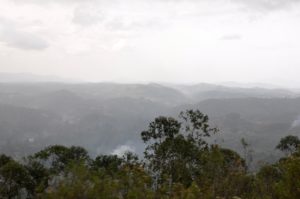 I sat next to a semi-retired Sri Lankan businessman named Kyma. He was wearing a checkered shirt, pants and glasses. I mention pants because traditional garments for Sri Lankan men is sarongs. Kyma was friendly and knowledgeable about the train route. His work at a furniture manufacturer required him to travel twice a month. He spoke English with a heavy accent. Contrary to what is found in many countries, in Sri Lanka it is the older people who are more likely to speak English. Sri Lanka (formerly Ceylon) was under British rule until 1948 and remained a British dominion until 1972. Only 10 percent of the people speak English fluently. The majority of people (75%) speak Sinhala. In the northern region, Tamil is spoken.
I sat next to a semi-retired Sri Lankan businessman named Kyma. He was wearing a checkered shirt, pants and glasses. I mention pants because traditional garments for Sri Lankan men is sarongs. Kyma was friendly and knowledgeable about the train route. His work at a furniture manufacturer required him to travel twice a month. He spoke English with a heavy accent. Contrary to what is found in many countries, in Sri Lanka it is the older people who are more likely to speak English. Sri Lanka (formerly Ceylon) was under British rule until 1948 and remained a British dominion until 1972. Only 10 percent of the people speak English fluently. The majority of people (75%) speak Sinhala. In the northern region, Tamil is spoken.
For his travel, Kyma chooses to take the train from Colombo to Peradeniya to Haputale. “It is relaxing,” he said. Glad to hear I was curious about the route, he narrated points of interest along the way. “We are nearing the highest elevation…This is the dairy region…Another tunnel up ahead.” In fact, there are 46 tunnels on the Main Line. When we stopped next to another train, Kyma saw a friend of his and had a quick chat.
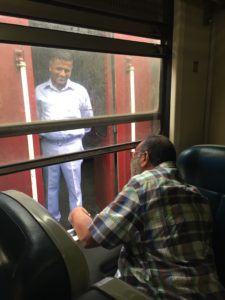
Kyma had worked previously as a flight staffer but was now glad to travel by land rather than by air. With a smile he said, “The trains often do not run on time.” He chooses second-class reserved seat tickets for his trips. “You made a good ticket choice,” he said. “Second class reserved is the best way to go. First class you can’t open the windows. It’s air conditioned with TVs but who needs that. I like the fresh air and the view of the landscape.” He was right. I liked feeling the air too and taking pictures without the obstruction of a windowpane.
The drama of the countryside could not be replicated on a TV screen. At the high elevation the mountains appeared as layers of distant shadows. Around a bend the tracks pivoted against a hillside and a steep valley drop. The tunnels blacked out the landscape and in me created a sense of wonder about who dug through this rock to lay this track.
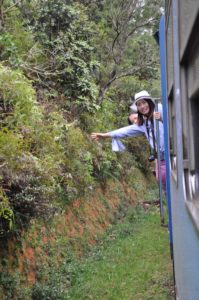 A conductor came by and checked my ticket. Other than that, it felt like the people’s train. There was joy and camaraderie. Two excited young women were lifting their heads and waving their arms from the open doorways as if they were free for the first time. Passengers moved easily from different sides of the aisle to view the wonders of the countryside. A young Sri Lankan man walked through the car balancing a box filled with tea and roti (flatbread). He and his customers exchanged broad smiles. The safety and security of open doors and windows did not seem a consideration at all.
A conductor came by and checked my ticket. Other than that, it felt like the people’s train. There was joy and camaraderie. Two excited young women were lifting their heads and waving their arms from the open doorways as if they were free for the first time. Passengers moved easily from different sides of the aisle to view the wonders of the countryside. A young Sri Lankan man walked through the car balancing a box filled with tea and roti (flatbread). He and his customers exchanged broad smiles. The safety and security of open doors and windows did not seem a consideration at all.
The clickety clack sound of the train rolling towards its destination was that of a mechanical device rather than the quiet engine of a vehicle. We arrived at Pattipola station, which reaches 6,225 feet above sea level. It’s the highest station stop within the 900-mile government owned railway network. This vista on top of the world dwarfed the train and us. What a small space we occupy in everyday life.
Kyma and I bid farewell at the Haputale station in the Badulla District in the Uva Province. The cost of my 25-mile scenic train ride was 600.00 rupees or approximately $4.00 in USA currency. What a bargain!
Save
Save
Save
Save
Save
Save
Save
Save
Save
Save
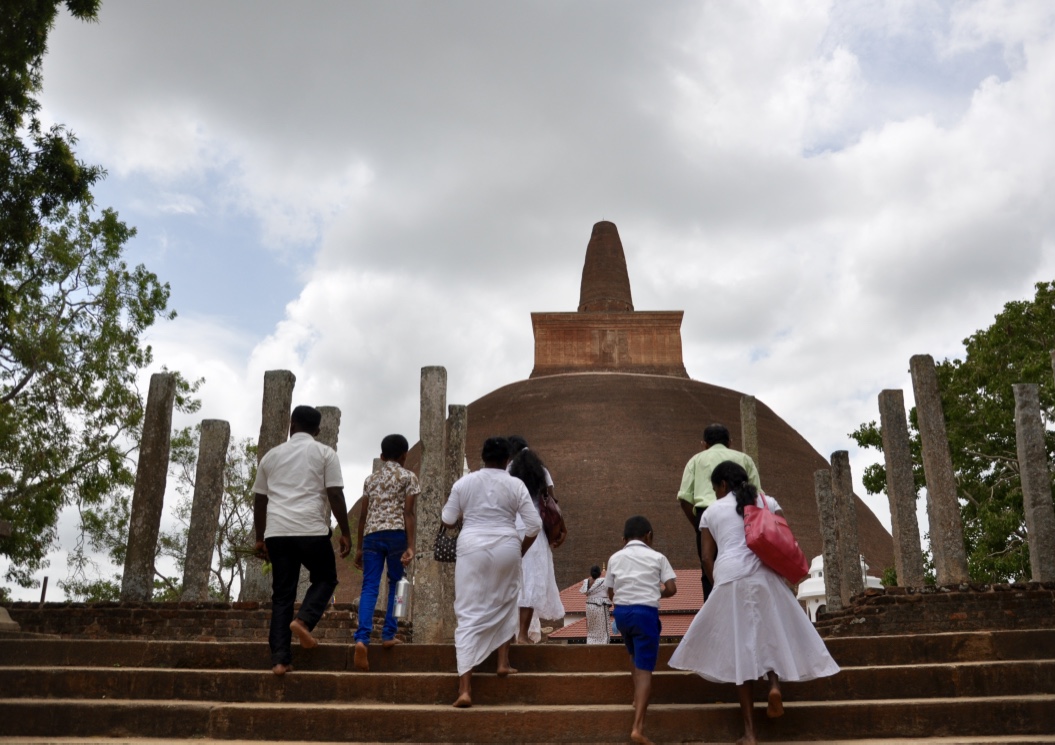 I would rather have taken off my shirt than my shoes when I first arrived in Sri Lanka. The July heat overwhelmed me. I thought I’d drop in the streets giving the flies a delightful morsel fresh from Chicago. At the time I visited, Sri Lanka was a country at peace and poised for tourism. Modern boutique hotels were my respite.
I would rather have taken off my shirt than my shoes when I first arrived in Sri Lanka. The July heat overwhelmed me. I thought I’d drop in the streets giving the flies a delightful morsel fresh from Chicago. At the time I visited, Sri Lanka was a country at peace and poised for tourism. Modern boutique hotels were my respite.
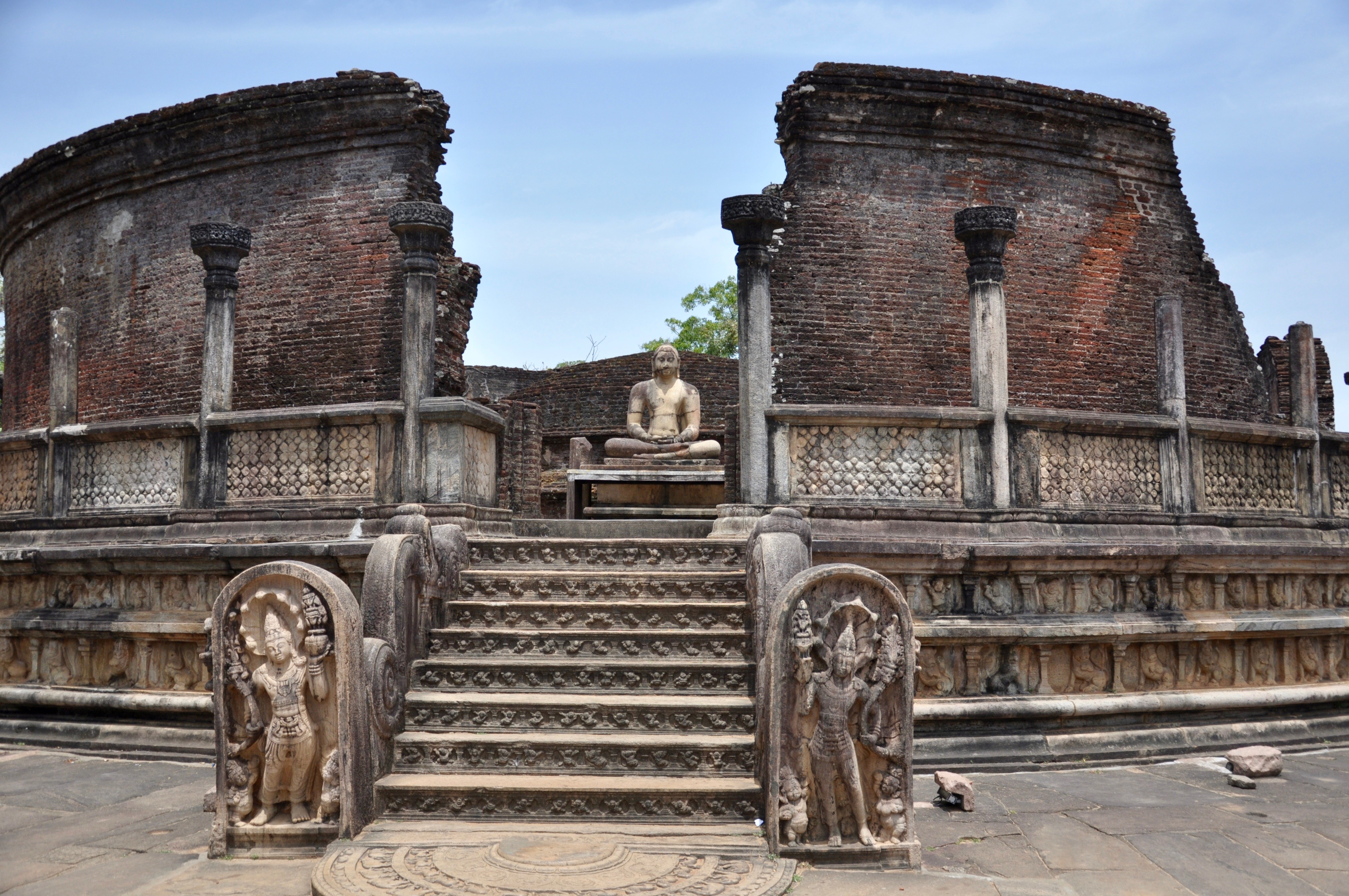 “It is better to travel well than to arrive” – Buddha
“It is better to travel well than to arrive” – Buddha I have been traveling beyond Amtrak routes and outside of the USA this summer. Most recently I traveled to Sri Lanka, an island country south of India. It operates the highest broad guage railway (5 ½ feet wide) in the world. While I spent most of the time traveling in a vehicle, I had the privilege of riding on the Main Line from Nanu-Oya to Haputale in the hill country. The train traverses through tea plantations, forested mountains and valleys and lots of tunnels. The view was spectacular.
I have been traveling beyond Amtrak routes and outside of the USA this summer. Most recently I traveled to Sri Lanka, an island country south of India. It operates the highest broad guage railway (5 ½ feet wide) in the world. While I spent most of the time traveling in a vehicle, I had the privilege of riding on the Main Line from Nanu-Oya to Haputale in the hill country. The train traverses through tea plantations, forested mountains and valleys and lots of tunnels. The view was spectacular. I sat next to a semi-retired Sri Lankan businessman named Kyma. He was wearing a checkered shirt, pants and glasses. I mention pants because traditional garments for Sri Lankan men is sarongs. Kyma was friendly and knowledgeable about the train route. His work at a furniture manufacturer required him to travel twice a month. He spoke English with a heavy accent. Contrary to what is found in many countries, in Sri Lanka it is the older people who are more likely to speak English. Sri Lanka (formerly Ceylon) was under British rule until 1948 and remained a British dominion until 1972. Only 10 percent of the people speak English fluently. The majority of people (75%) speak Sinhala. In the northern region, Tamil is spoken.
I sat next to a semi-retired Sri Lankan businessman named Kyma. He was wearing a checkered shirt, pants and glasses. I mention pants because traditional garments for Sri Lankan men is sarongs. Kyma was friendly and knowledgeable about the train route. His work at a furniture manufacturer required him to travel twice a month. He spoke English with a heavy accent. Contrary to what is found in many countries, in Sri Lanka it is the older people who are more likely to speak English. Sri Lanka (formerly Ceylon) was under British rule until 1948 and remained a British dominion until 1972. Only 10 percent of the people speak English fluently. The majority of people (75%) speak Sinhala. In the northern region, Tamil is spoken.
 A conductor came by and checked my ticket. Other than that, it felt like the people’s train. There was joy and camaraderie. Two excited young women were lifting their heads and waving their arms from the open doorways as if they were free for the first time. Passengers moved easily from different sides of the aisle to view the wonders of the countryside. A young Sri Lankan man walked through the car balancing a box filled with tea and roti (flatbread). He and his customers exchanged broad smiles. The safety and security of open doors and windows did not seem a consideration at all.
A conductor came by and checked my ticket. Other than that, it felt like the people’s train. There was joy and camaraderie. Two excited young women were lifting their heads and waving their arms from the open doorways as if they were free for the first time. Passengers moved easily from different sides of the aisle to view the wonders of the countryside. A young Sri Lankan man walked through the car balancing a box filled with tea and roti (flatbread). He and his customers exchanged broad smiles. The safety and security of open doors and windows did not seem a consideration at all.